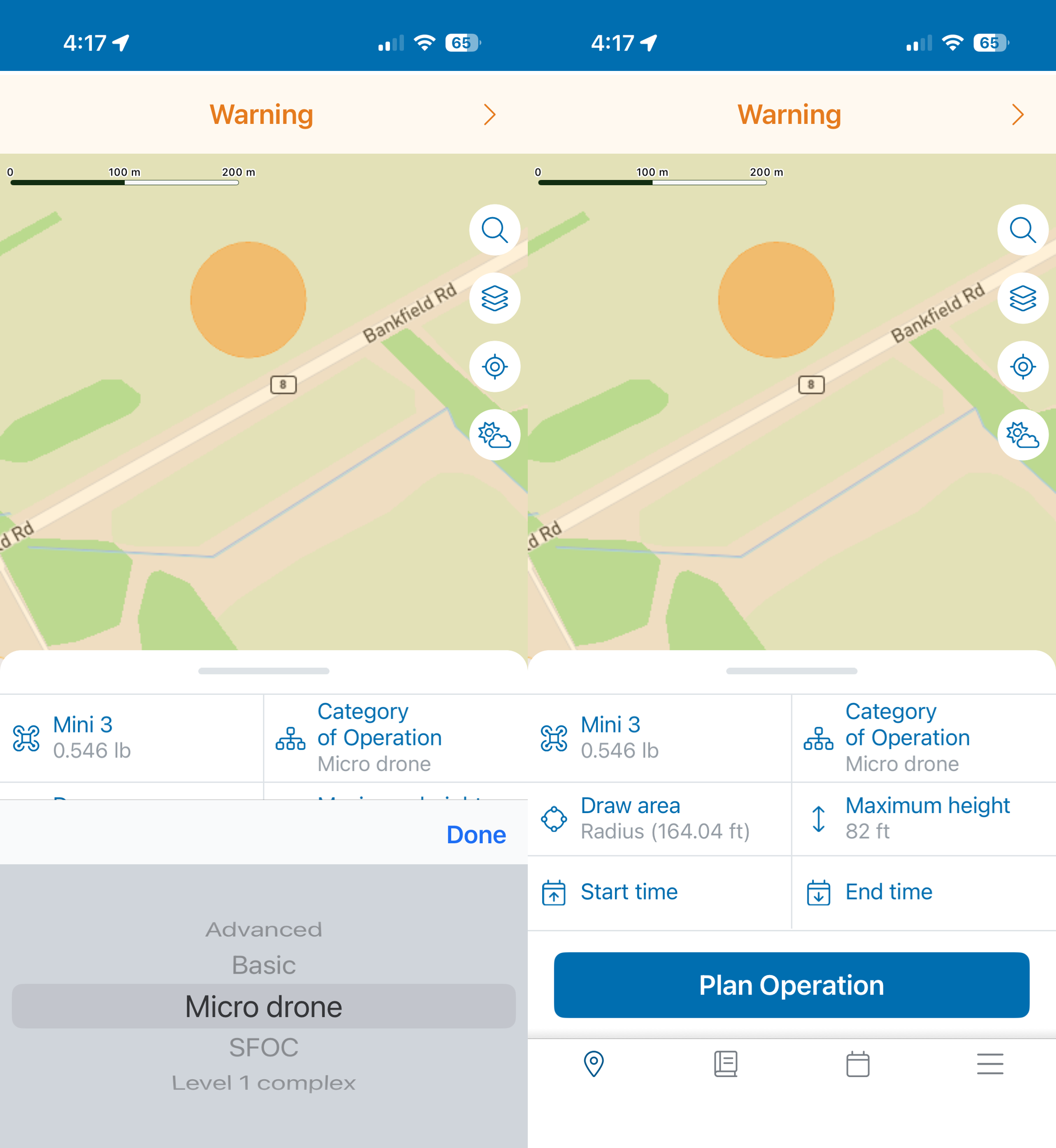







NAV Drone Mobile supports the planning of four categories of operation. Each category corresponds to specific operation types and is validated against the applicable Transport Canada rules and regulations.
This section provides an overview of each category, including the supported operation types, allowable operating weights, and pilot licensing requirements.
For detailed rules and regulations, please refer to Transport Canada’s Drone Safety webpage.
The following categories of operation are available for planning in NAV Drone Mobile:
Although Level 1 Complex operations can be planned in NAV Drone Mobile, the Air Risk Class (ARC) and Population Density map layers are not yet available on mobile. For full planning capability, use NAV Drone Web.
Select the Micro drone category of operation in NAV Drone to plan a micro drone operation.

Select the Basic category in NAV Drone to plan an operation conducted under Visual Line of Sight (VLOS) conditions.
Basic operations are limited to areas away from bystanders and outside of controlled airspace.

Select the Advanced category in NAV Drone to plan operations in higher-risk environments such as near people or in controlled airspace.
The Advanced category supports the following operation types:
Operating weight limits:
Requirements:

Select the SFOC category in NAV Drone to plan an operation conducted under an approved Transport Canada Special Flight Operations Certificate (SFOC).
This category applies to operations that fall outside the standard Basic, Advanced, or Level 1 Complex rules.
You must hold a valid SFOC approval issued by Transport Canada. If you do not have one, you must apply directly through Transport CanadaOpen a new window.
Foreign operators may use their approved SFOC number in place of a Transport Canada drone registration.
